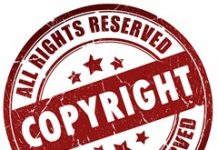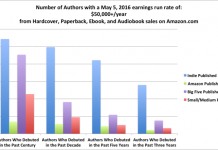 Matt Goldfeder, Director of Mobile Products, Consumer Reports: only has one source of revenue, subscription. When develop these things think everything is so simple and everyone will understand it – often find out this is not the case will the consumer. The hardest decision in getting started was the build or buy decision. Development of the site is considered a retention benefit for the subscribers and don’t know if this works yet. Research said that could charge as much as $15 per year. Consumer Reports is non-profit and doesn’t take ads so that it’s important that the app doesn’t take away the subscription model. Real problem with the app is that when it gets bad reviews on the app store there is no way for the company to answer the complaints so all the buyers see is bad reviews with no response. Don’t know who app subscribers are yet and since they are Consumer Reports can’t use some of the reporting tools that Apple has available to put in apps.
Matt Goldfeder, Director of Mobile Products, Consumer Reports: only has one source of revenue, subscription. When develop these things think everything is so simple and everyone will understand it – often find out this is not the case will the consumer. The hardest decision in getting started was the build or buy decision. Development of the site is considered a retention benefit for the subscribers and don’t know if this works yet. Research said that could charge as much as $15 per year. Consumer Reports is non-profit and doesn’t take ads so that it’s important that the app doesn’t take away the subscription model. Real problem with the app is that when it gets bad reviews on the app store there is no way for the company to answer the complaints so all the buyers see is bad reviews with no response. Don’t know who app subscribers are yet and since they are Consumer Reports can’t use some of the reporting tools that Apple has available to put in apps.
Cheryl Goodman, Director of Marketing, Qualcomm: 20 years ago media was a one way communication from one entity. Now carriers are fighting to send media to users. Price for all the functionality of mobile phones is the battery. Material science hasn’t changed in the last decade. Until battery technology changes will always be stressed about mobile device use and this also means that have to be careful about mobile content taxing the device too much. Have to get to a point where screen sizes are conducive to the printed page. Ultimate goal should be to carry one device. Consumers enthused with tablets but are not satisfied with the experience – need a lot of improvement on the component and the content sides. An internet connection is not a content strategy. Need to look at the total cost of delivering the product to the consumer; for example, tablets are expensive and carriers are charging for data as well. Will consumer pay all of this and pay content too? Publishers should find this out first before they develop their content. Their color digital display will have the same contrast as paper. Content delivery is not free and publishers need to remember this in designing their stuff. Two fundamental issues with iPad: real estate, how many apps with you repeatedly come back to; consensus seems to be among publishers is that there is not a return on investment on the apps publishers have developed.
Eric Gillin, Web Director, Esquire.com: biggest hurdle Hearst faced is what to do with the stuff that is on paper. How do you turn pieces of paper into something that is interesting on a device. The biggest barrier to entry is getting the idea of what to do. Experimentation is essential and everyone is learning on the job simultaneously. Have a rudimentary template down from the Esquire magazine, but there is no “push a button and it goes to all devices”. Is not easy yet. Don’t even know what devices will grow up to become. They are still babies. A lot of consumers are overwhelmed and need to do a lot of learning. View mobile audience differently than print audience. Audiences choose path of least of resistance in consuming content. Have to be careful not to over complicate things and try to do so much. When creating a mobile app for a phone you need to think about what the user wants on a phone and not put everything on it. Be careful of mission creep, keep it really simple.
Brenda Walker, Managing Publisher, Zumobi: started as a smartphone focused company and have over 30 apps. Develop cross-platform and cross-device. Magazine publishing partners are disappointed with iPad in terms of single issue sales. Android is blowing iPhone away in terms of numbers with some apps having 3 times the downloads of the iPhone. Uptake on mobile can be from 15 to 30% of what your web audience is. Not seeing the iPad as a “lean back” device and seeing that the time they spend with the iPad is not greater than the time that they are spending on mobile devices.
Mickey Alam Khan, Editor-in-Chief, Mobile Marketer: moderator.
Terrence O’Hanlon, Publisher, Uptime Magazine: need to think about how much time consumers have to spend on your app. Being simple might be better. Still have a purely text option and users like it. Finds that the Apple crowd is a much heavier user than the Android crowd. In their B to B business advertisers are moving to web and mobile and don’t seem to like print advertising. One problem is getting advertisers to design for mobile. In their business advertisers want to use one ad for everything and this doesn’t work.
Frank Luby, Partner, Simon-Kucher & Partners: change is fundamental and the key word is mobile. People are willing to make a lot of tradeoffs, some of them large, for portability. This huge benefit is often underestimated and producers of content need to figure out ways to overcome some of the tradeoffs. Print doesn’t travel well on a lot of devices. Consumers only do three things, read, watch or listen. Can’t monetize QR codes and SMS.
Clinton Bonner, Everything to Everything: The ability to have hyper-specific interaction within content is going to be a great way to monetize the content. Being able to gameify the experience is important to developing loyalty.
Ron Mtejko, Owner, MVP Media: focusing on tablets and the iPad because are dominating market share. Biggest challenge was finding the talent who can take my vision and do what I wanted to do. My imagination far outpaces what is available right now. Incorporating multi-media into advertising is generating good response rates. Word “fun” is missing a lot of times when talk to other publishers about magazines. Market for Android tablets is too small right now to do anything for them.
Jarred Cocken, Creative Director, The Wonderfactory: In 2009 released Sports Illustrated on a tablet before iPad came out. Now the tablet has largely replaced the laptop in consuming media. Traditional tv has 43% of consumption in the US and has 43% of advertising budget. Web has 25% of consumption and 19% of ad revenue. On mobile 8% of consumption and only 0.5% of ad revenue. Massive production problem associated in getting content in all the different forms that it has to go into. Every time create content have to change it for the device it is going to be seen on and this is one reason Google has had to step in with manufacturers using the Android platform. There are two audiences; one that wants the tablet content to be exactly the same as the content is on print and a second type that wants something very different. A lot of times publishersa’ money can be better spent optimizing their mobile strategy than it is going with the “popular thing” such as the iPhone or iPad.
Sarah Ellenbogen, Google, Strategic Partnerships team: 2010 was the year of mobile. Google reached its 1 billion dollar ad mark. Portable units have unique features that a computer doesn’t have. More people have access to mobile phones than to clean water. Three ways to monetize mobile today: transactions, subscriptions, advertising. Disagrees with Cheryl and thinks that will always need more than one size mobile device. 6 to 7% conversion rate with mobile ads, which is higher than on desktop devices. Publishers have to live up to the promise of the new platform and won’t be successful if don’t. Publishers should survey to find out what their consumers want and target that group first. Publishers should always have a mobile web site at their first step.

































